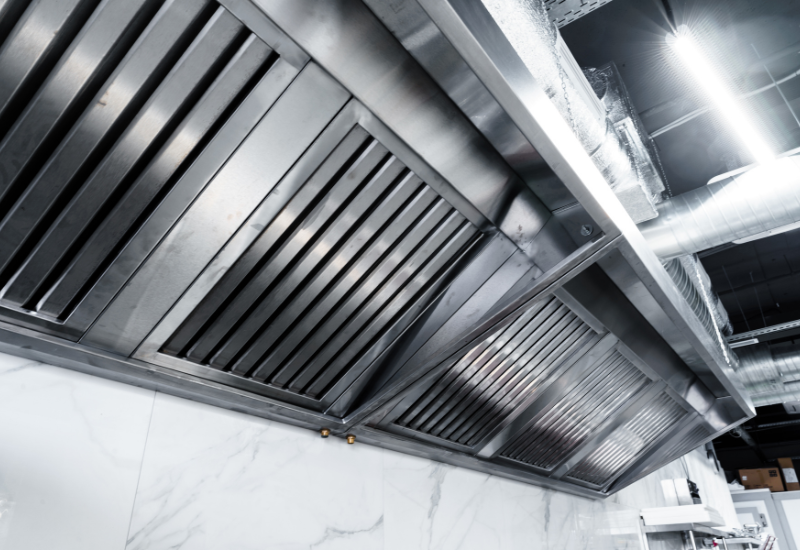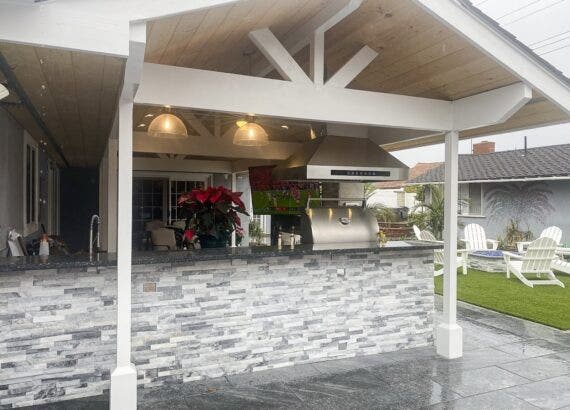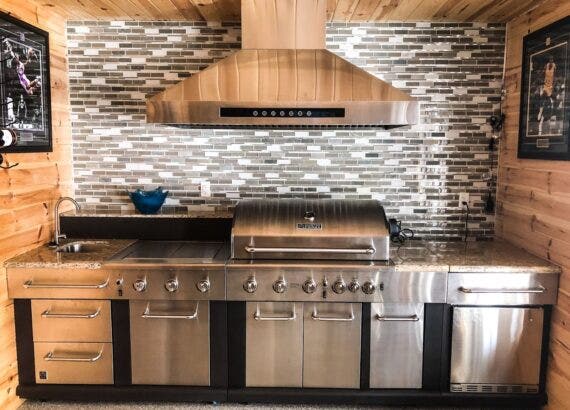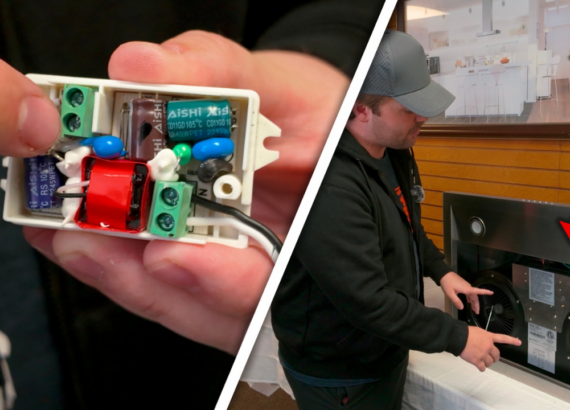Video: The Best Way to Remove Scratches from Stainless Steel

Dealing with unsightly light scratches on stainless steel appliances can be a headache for homeowners. In this video, Mark from Proline Range Hoods has helpful tips to address those pesky surface scratches on high-end stainless steel ranges such as Viking, Wolf, Thermodor, DCS, and GE Monogram series.
He will also guide you through differentiating between light and deep scratches, preparing the surface for treatment, and easily refurbishing the area with readily available tools.
Key Takeaways
- Determine if a scratch is light or deep by checking if your fingernail catches on it.
- Clean the surface and identify the grain of the stainless steel before refinishing.
- Use maroon and grey Scotch-Brite pads with a wood block for even pressure and long, continuous strokes in the direction of the grain to eliminate light scratches.
Table of Contents
Identifying Scratches
Determining Light Scratches
Light scratches are surface-level defects that usually result from regular wear and tear or minor accidents such as dropping a spatula or sliding a pan across the surface. These scratches are relatively easy to remove compared to deeper ones. To identify a light scratch, try running a fingernail across it. If the scratch feels smooth and does not catch the nail, it is considered a light scratch.
Determining Deep Scratches
Deep scratches are more severe in nature and can be challenging to remove. A deep scratch may have penetrated the surface layer of the stainless steel, making it difficult to restore the original appearance. To determine whether a scratch is deep, follow the same process as with light scratches: run a fingernail across the scratch. If your fingernail catches on the scratch and clicks, it is likely a deep scratch.
It is important to note that the methods discussed in this article focus on addressing light scratches, as deep scratches often require more advanced techniques and professional assistance to repair.
Preparing the Surface
Cleaning the Surface
Before beginning the refinishing process, it’s essential to start with a clean surface. Use a white scotch brite pad, which has no grit and is intended for aggressive cleaning. Begin by wiping away any dirt, dust, or residue from the surface with the pad, always following the direction of the grain.
Once cleaned, you may notice streaks from the cleaning product. This is normal and will not affect the outcome of the refinishing process. The key is to ensure the surface is free of any contaminants so that the refinishing process can be done effectively. Remember to be patient and work methodically, taking your time to achieve the best results possible.
Refinishing Process
Understanding Grains
A crucial aspect of refinishing stainless steel appliances is understanding the direction of the grain. Every stainless steel has a grain, and appliances typically use a number four brushed finish stainless steel. The grain is essential in determining the motion and angle one must follow when using any abrasive material during the refinishing process. Always move in the same direction as the grain.
Using Scotch Brite Pads
Scotch Brite pads are essential tools for refinishing stainless steel surfaces. Preferably, two different colors of Scotch Brite pads are used: maroon and gray. The maroon Scotch Brite pad has a coarser grit, and the gray pad has a finer grit. Using a wood block together with the Scotch Brite pads ensures even surface pressure distribution and helps prevent undesirable streaks or lines.
Regraining Stainless Steel
Regraining is the process of making the stainless steel surface appear uniform over the scratched area. To regrain stainless steel using Scotch Brite pads, follow these steps:
- Start with the maroon Scotch Brite pad and work on the scratched area in the direction of the grain by doing long, continuous strokes. Blend the lines and try not to spend too much time in one area.
- Once the scratches are mostly gone, switch to the gray Scotch Brite pad and keep doing the same motion. The gray pad will give the stainless steel a cleaner, satin finish.
- As you work on the surface, make sure you don’t move the pad in a scrubbing motion, or the finish may become uneven.
- If the scratches are too deep, note that this method may not be effective in removing them completely.
The refinishing process can take a considerable amount of time and patience, especially on large appliances such as range hoods. However, following these steps can help make the stainless steel surface look significantly better and free of light scratches.
Conclusion
In order to address light scratches on stainless steel appliances, one can follow a simple but effective method. This method utilizes maroon and gray Scotch-Brite pads, a wood block for even pressure distribution, and continuous strokes in the direction of the grain. It is important to note that this technique is only suitable for light scratches and not deep ones.
Start by cleaning the surface with a white Scotch-Brite pad to ensure a clean working area. Then, use the maroon Scotch-Brite pad with a wood block, applying even pressure, and make long, continuous strokes in the direction of the grain. This process might take some time, depending on the area being treated.
After the maroon pad has removed most of the scratches, switch to the gray Scotch-Brite pad to provide a cleaner, satin finish on the stainless steel. Maintain a similar technique of long, continuous strokes in the direction of the grain. It’s crucial to work on larger areas to avoid any inconsistencies in the final appearance.
Finally, it is possible to clean the surface once again using recommended cleaners. Bear in mind that deeper scratches may still be visible and that this process requires patience. The end result will be a significantly improved, scratch-free finish on the stainless steel appliance.







Comments are closed.